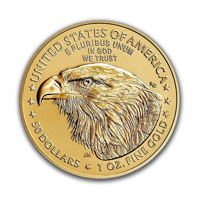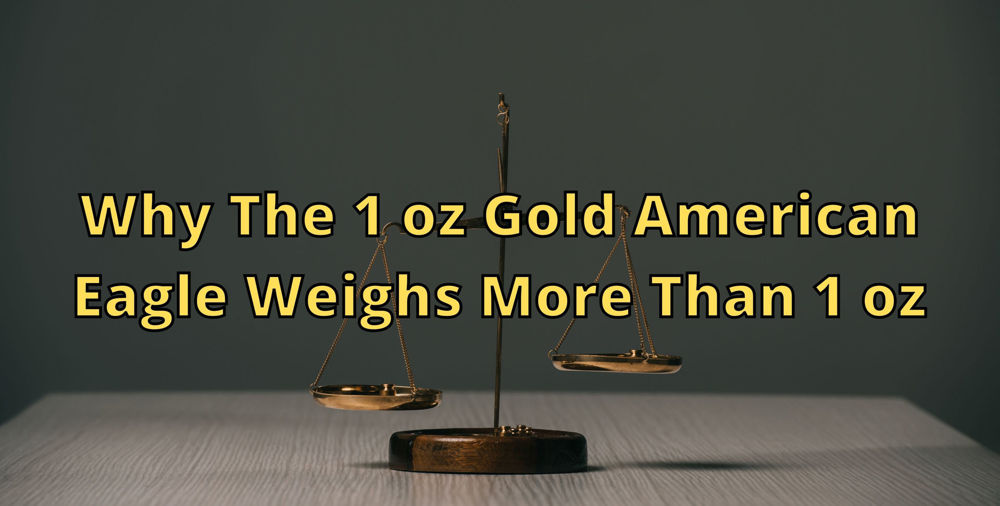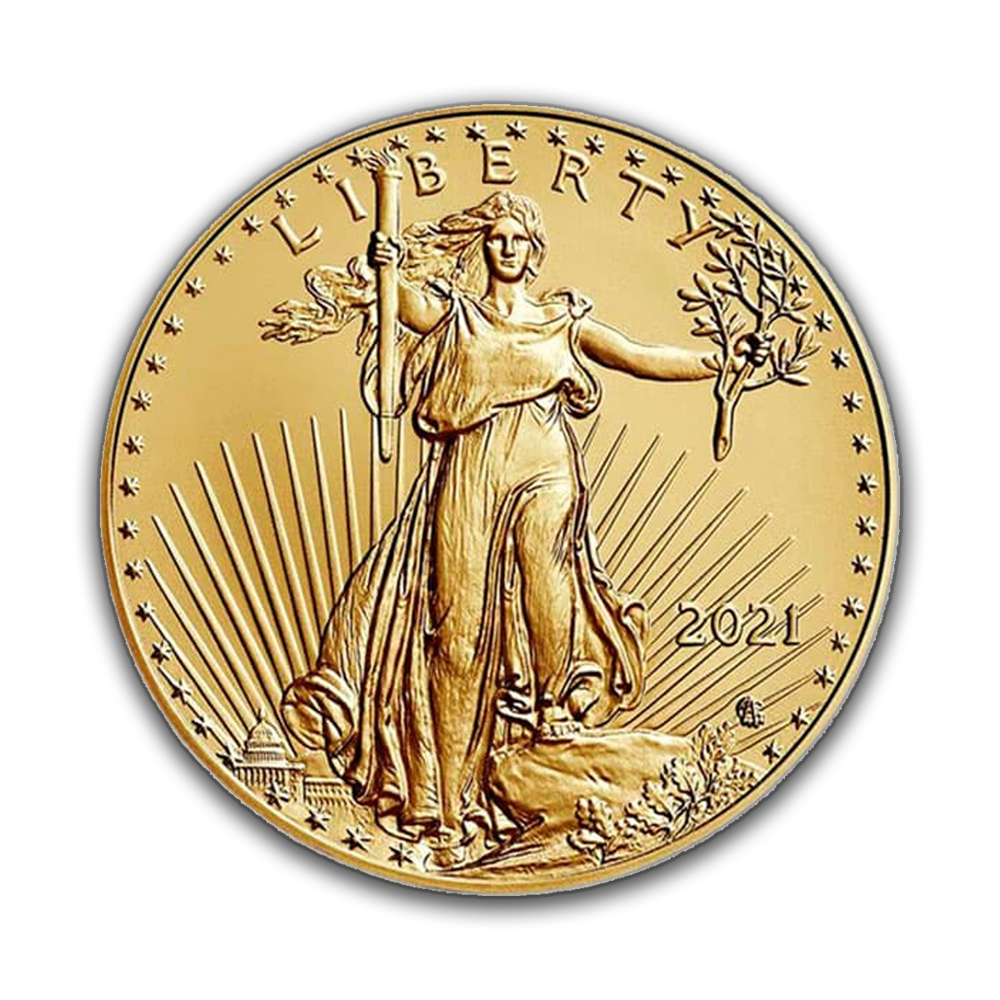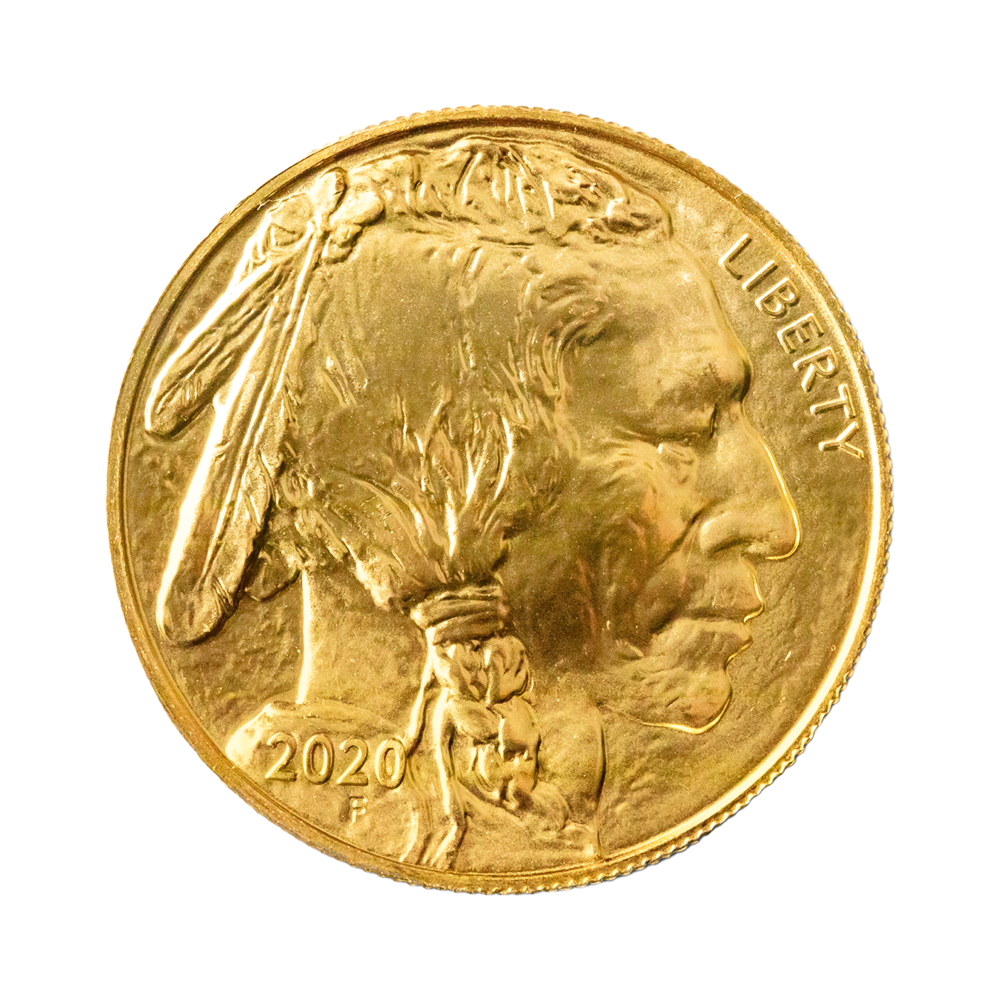Posted on December 07, 2021


Why does the 1 oz American gold eagle coin weigh more than one troy ounce? It’s a reasonable question with a simple answer: the coin does contain one troy ounce of gold, and it also contains other metals that increase the total gross weight of the coin up to 1.09 oz.
Here’s the simple version: all bullion coins are described based on the net weight of precious metals they contain. Read on for a more detailed explanation.
 As an official government-issued bullion coin, the American eagle is guaranteed to contain a full troy ounce of gold. With the American eagle, the purity level of the gold is 22 karat (22k), or a purity of 91.6% gold. You might remember from jewelry shopping; each 1-karat means 1/24th pure gold.
As an official government-issued bullion coin, the American eagle is guaranteed to contain a full troy ounce of gold. With the American eagle, the purity level of the gold is 22 karat (22k), or a purity of 91.6% gold. You might remember from jewelry shopping; each 1-karat means 1/24th pure gold.
History lesson: the word “karat” comes from the ancient Greek word κεράτιoν, or “fruit of the carob.” In the olden days, before standardized weights and measures, the naturally-occurring uniformity of carob seed weights was widely employed as a unit of measure.
Since it’s a 22k (91.6% pure) gold coin, if the 22k American eagle weighed 1 oz in total, it would be worth less than a pure gold coin of the same size.
It might seem like 24-karat gold is simply the best option for all gold bullion, but there are actually a few benefits to using 22-karat gold instead. Because gold is a very malleable metal that can easily be scratched, deformed, or otherwise damaged, using a gold alloy can help provide additional durability and toughness.
If you’ve ever looked into America’s history of circulating gold coins, you’d learn that American eagle coins have almost always been minted in 22kt gold, ever since 1795. It’s not a coincidence that British gold coins were also minted in the same 22kt alloy since 1526, simply because it’s so much more durable than pure gold. This 22kt alloy is often called “crown gold,” named after King Henry VIII’s introductory coin that used 22kt gold rather than the previous, softer 23kt gold.
In the case of the 1 oz American gold eagle, the non-gold portion of the coin is composed of 3% silver and 5.33% copper. Copper is a metal that has been used in coins for thousands of years and continues to be an integral element in coin production today.
For the American gold eagle, this small percentage of copper plays a vital part in strengthening the coin. Notably, the South African Krugerrand is also minted in 22kt crown gold alloy but notably uses a silver-free copper-gold alloy. That’s why the Krugerrand has a distinctive rose gold color.
Pure gold is undoubtedly desirable. That’s why the Royal Canadian Mint and Perth Mint are always trying to add another “9” to the fineness of their gold coins. The downside is simply that pure gold is far more susceptible to wear and tear than a crown gold alloy. Typically, metals used for a crown gold alloy are copper and/or silver, though other metals including zinc) can also make a more durable gold coin.
 Why, then, does the 1 oz American gold eagle coin weigh a total of 1.09 ounces, while the similar American Buffalo gold coin has a gross weight of 1.0001 troy ounces? Though the American gold eagle might seem like the outlier, it’s traditionally more common for mints to manufacture coins that aren’t made of pure gold.
Why, then, does the 1 oz American gold eagle coin weigh a total of 1.09 ounces, while the similar American Buffalo gold coin has a gross weight of 1.0001 troy ounces? Though the American gold eagle might seem like the outlier, it’s traditionally more common for mints to manufacture coins that aren’t made of pure gold.
The American Buffalo coin, made with 24-karat gold and first released in 2006, marked the first time the United States Mint issued a 24k gold coin. There are no alloys or other metals in the American buffalo gold coin as there are with American eagle gold coins, but a pair of these 1 oz coins still contain the same exact quantity of gold.
Considering that government mints are first and foremost interested in producing everyday circulation coinage that’s expected to last for decades, it’s no wonder it took the U.S. Mint 20 years after the modern American eagle to produce their first pure gold coin.
Remember, for gold and all bullion coins, the gross coin weight isn’t what’s important; only the gold weight is relevant. As you’d expect, this remains consistent on all the American eagle gold coins, from the 1 oz size all the way down to 1/10 troy oz, ¼ troy oz, and ½ troy oz sizes.
All these gold eagles have a gross weight greater than their quantity of gold. The 1/10 oz coin weighs 0.1091 oz, the ¼ oz coin totals 0.2727 oz, and the ½ oz coin is 0.5454 oz.
The American gold eagle coin may weigh more than 1 oz, but the actual value is in its gold weight. The addition of copper and silver to create a stronger, more resilient, and durable coin merely makes the American gold eagle a substantially more suitable coin for actual use, however unlikely that may be…